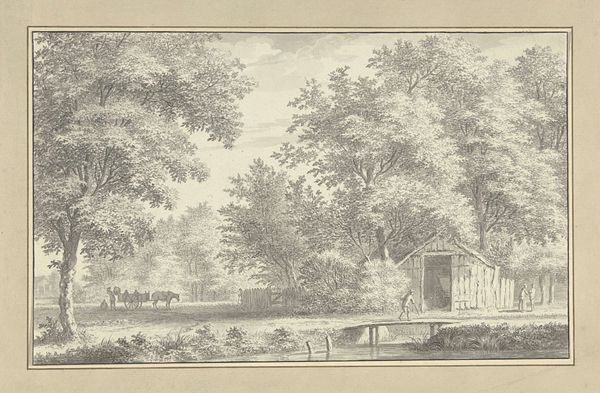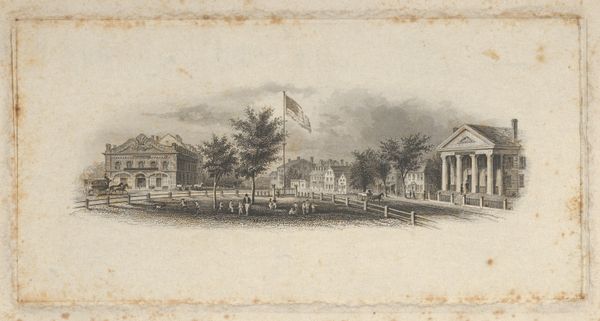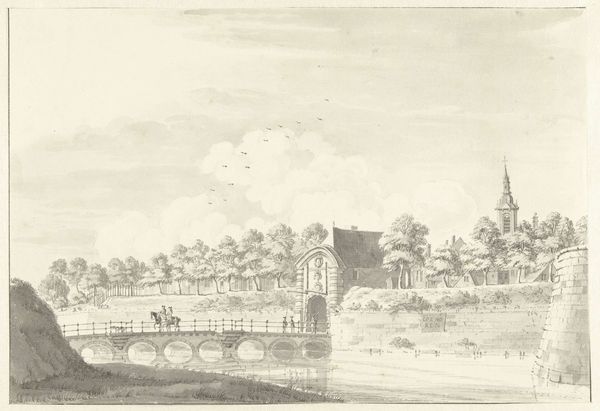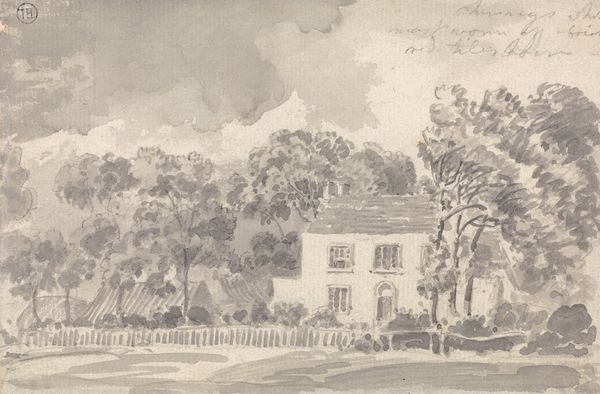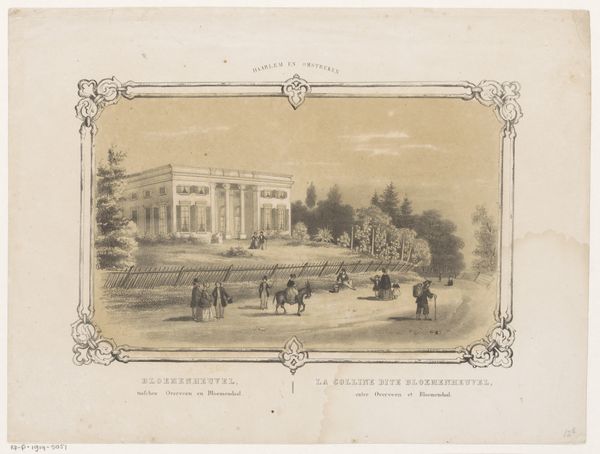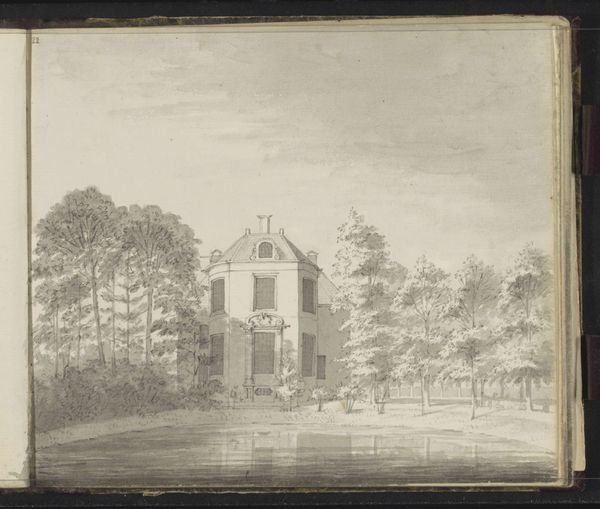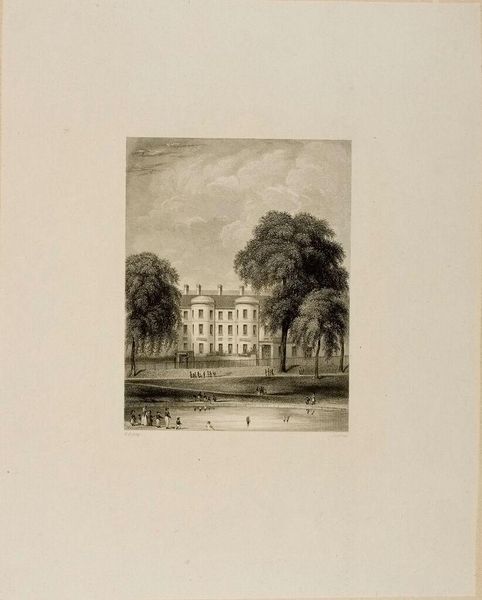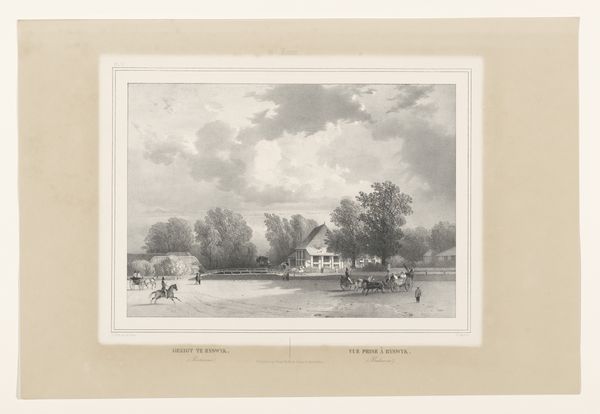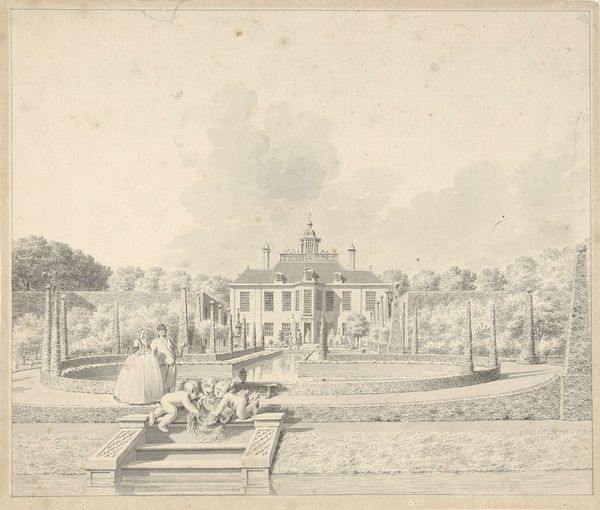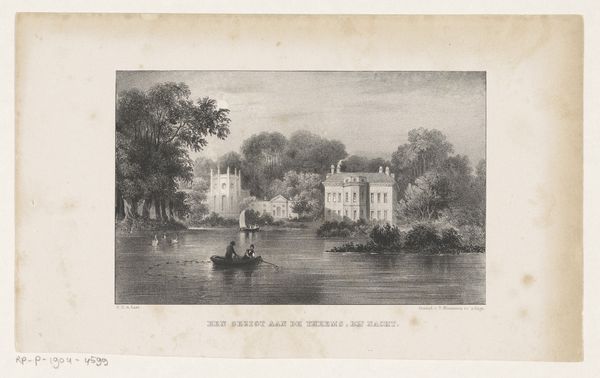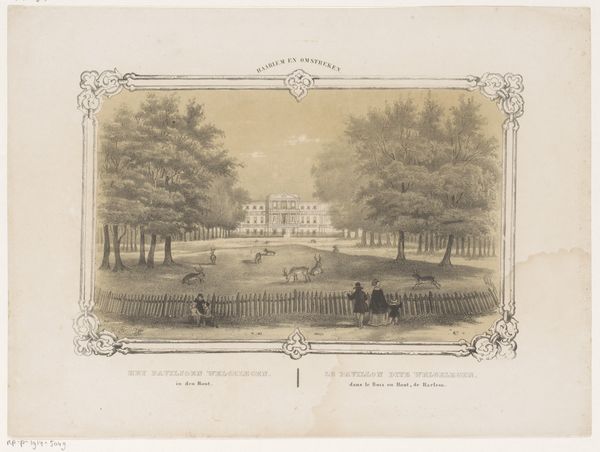
Dimensions: height 119 mm, width 169 mm
Copyright: Rijks Museum: Open Domain
Editor: This is "Gezicht op een landhuis aan het water" which roughly translates to "View of a country house on the water," created sometime between 1836 and 1912 by Isaac Weissenbruch, currently housed at the Rijksmuseum. It is an engraving. What strikes me is how the intricate lines create a sense of serenity, despite the bustling scene along the water’s edge. What elements of composition stand out to you? Curator: Formally, the work is a study in contrasts. Consider the almost regimented structure of the country house, a series of ordered rectangles and repeating shapes. Observe how this contrasts with the more organic forms of the trees, rendered with a freedom absent in the depiction of the architecture. How do the reflections in the water affect the overall symmetry? Editor: The reflections do soften the rigid geometry of the building somewhat, adding a layer of visual complexity and, indeed, breaking the symmetry. It seems there's a tension between the controlled architectural space and the wilder natural setting. Curator: Precisely. Also, examine the relationship between positive and negative space, created by the use of black ink and bare paper, delineating shapes that almost vibrate with reflected light, adding depth, drawing our eyes back to the architecture itself. Editor: That makes sense. So, the interplay of lines and the contrast between geometric and organic forms are key to understanding the aesthetic power of the work. Curator: Precisely! I'm drawn to the idea that by focusing on those formal components we discover something unique. Editor: Thank you for the perspective. I'll certainly view engravings differently now.
Comments
No comments
Be the first to comment and join the conversation on the ultimate creative platform.

